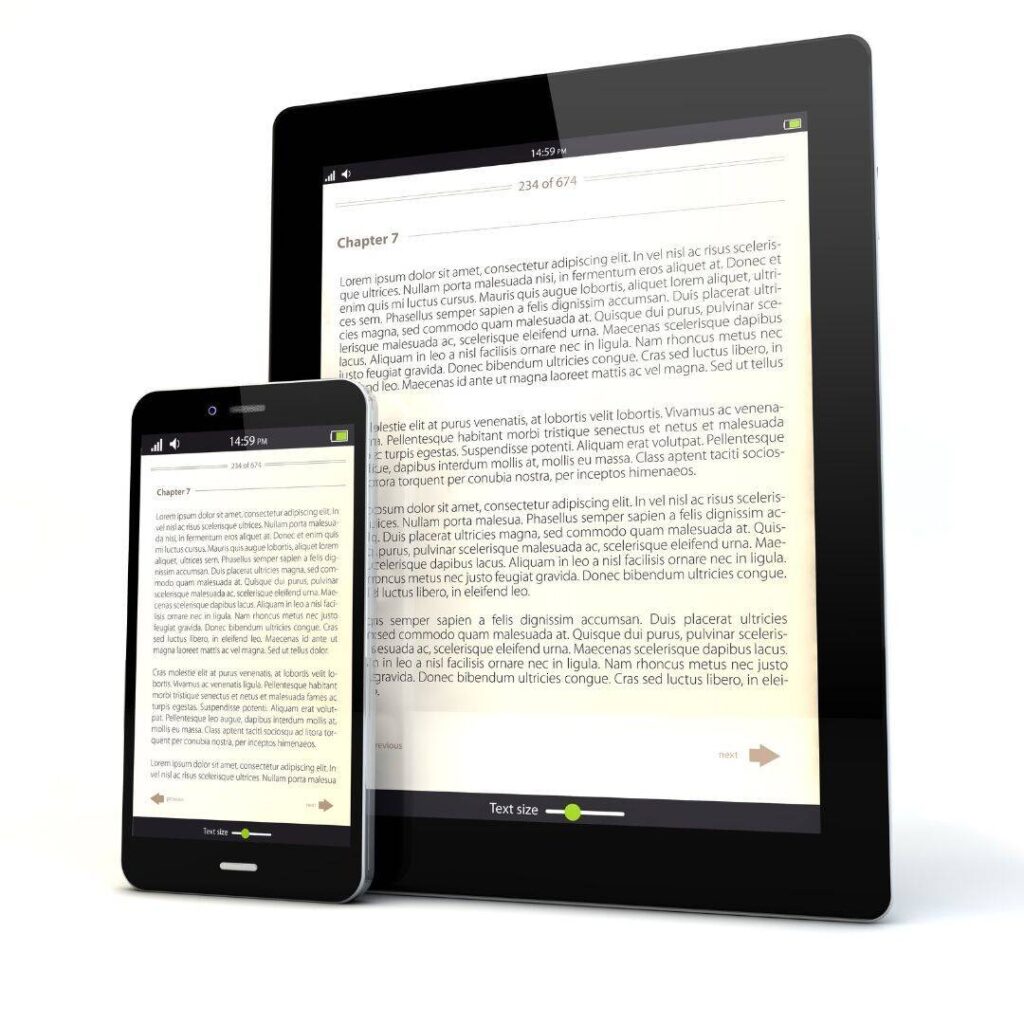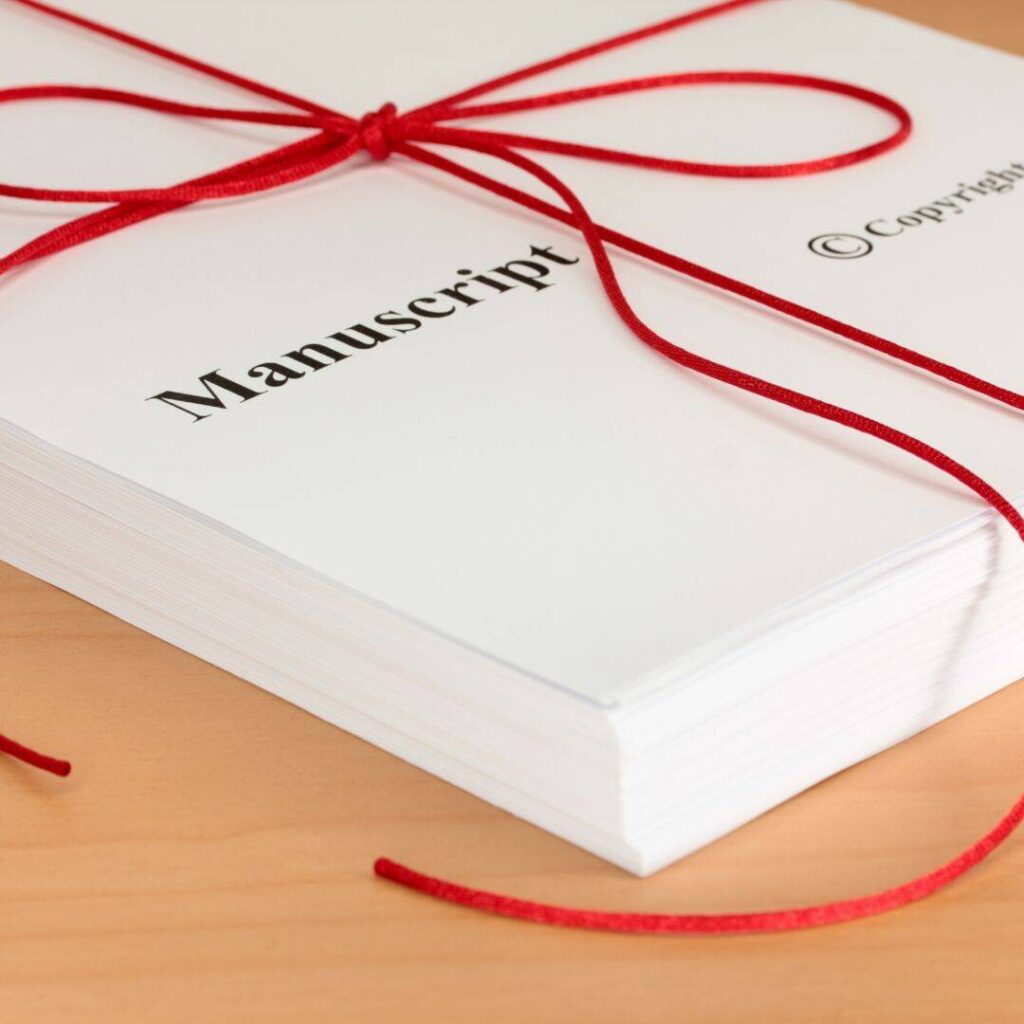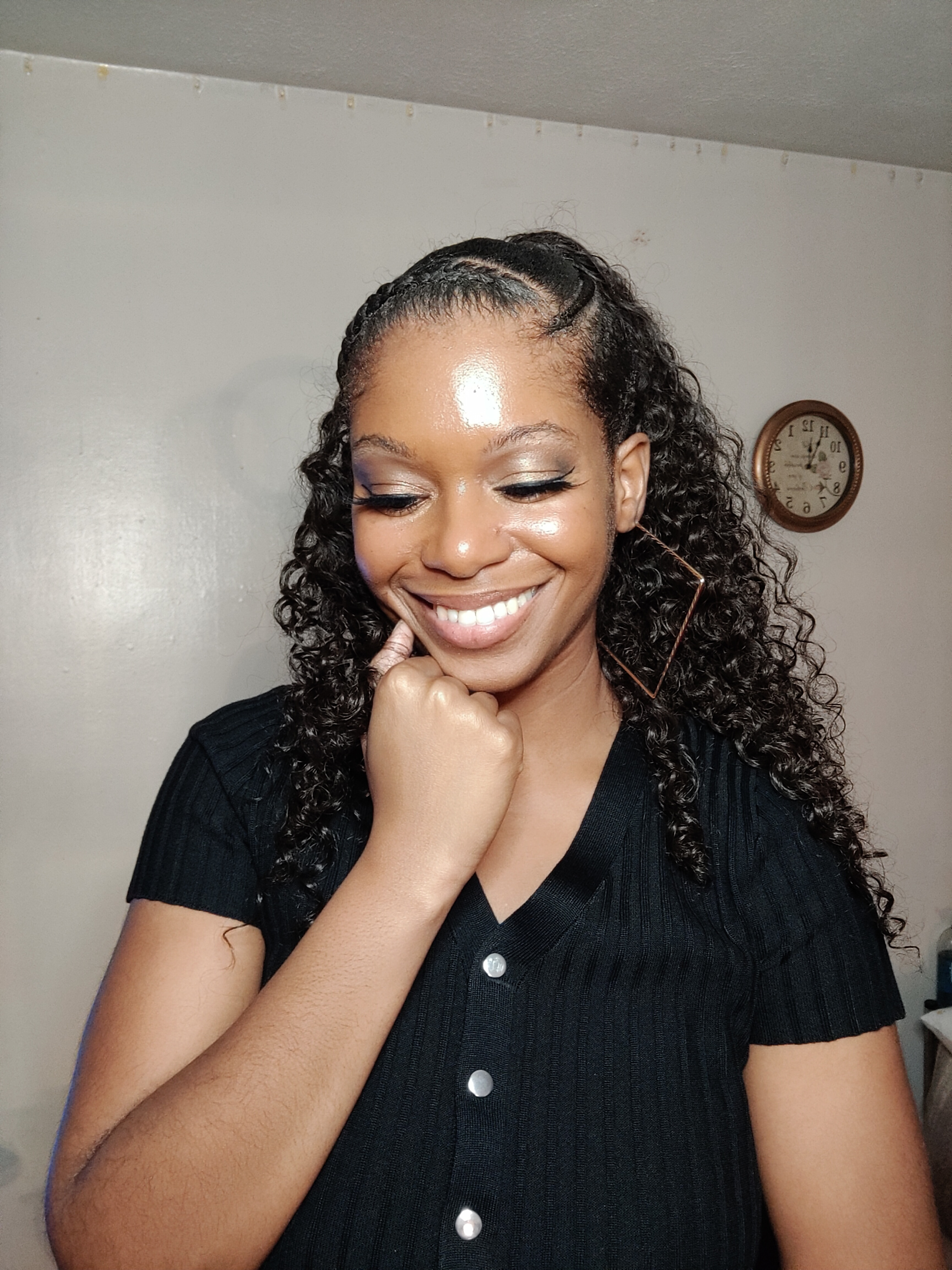5 Tips to Start Your Book Manuscript for Aspiring Writers
Aspiring writers, would you like 5 tips to start your book manuscript? Before we get to the 5 tips, I want to share my experience virtually meeting aspiring writers.
Over the past few months, I’ve done my fair share of networking and met several people who wish to write a book but don’t know where to begin. If you are reading this article and in the same boat as the other aspiring writers, today is your lucky day.
Starting a book manuscript can feel overwhelming if you don’t know where to begin. I used to be a writer who didn’t know where to start too!

I know the frustration of staring at a blank screen struggling to find the right words.
Feeling frustrated in front of your computer screen is very common, and there are proven techniques to help you move beyond that frustration and get started.
As a Digital Book Publishing Specialist, I’ve guided a handful of writers through the initial stages of their book ideas. I’m excited to share these tips and techniques with you that have helped my writing journey and the writers I’ve worked with. Let’s get you started on the path to creating your book manuscript.
Then, once you have your manuscript written, I will gladly help you self-publish it. First things first though!
1. Find Your Why: Define Your Purpose and Audience
Aspiring writers here is your first tip of 5 tips to start your book manuscript. Figure out your why and define your audience. These two steps are important and must be noticed.
You have to understand why you’re writing and who you are writing for. Clarity on your purpose and defining your audience will guide your content and keep you focused.
During my writing journey, my purpose wasn’t clear. I wanted to share my anxiety story and make money from it. Making money isn’t necessarily a purpose because if money was my main motivator, I could easily get a 9 to 5.
As I developed on my journey, I discovered that my why was to have an impact on anxiety sufferers letting them know they weren’t alone. As I have noted, the only audience I had in mind was myself and people like me.
Do you see how broad that is? It’s important to niche down.
For example, when I meet someone who wants to publish a book, I require them to fill out a questionnaire that helps them define who they are writing for and why they are writing.
Certainly, I wish I had this when I was starting! Let’s go step by step about identifying your purpose and audience.
Step-by-Step Guidance for Starting Your Book Manuscript:

- Identify Your Purpose: Ask yourself why you want to write this book. Is it to share knowledge, tell a story, entertain, or inspire? Understanding your intentions will give you a clear direction and increase your passion throughout the writing process.
The purpose of my writing was to tell my story, educate, inspire, and some entertainment. I threw in my witty personality whenever I could.
- Define Your Audience: Consider who will enjoy reading your book and be inspired. Find out what your intended readers may be interested in. I intended to reach anxiety sufferers who want to begin healing naturally.
My book ended up attracting anxiety sufferers but not necessarily sufferers who wanted to change. What are some of the needs and pain points of your target readers? Mapping these details out before writing will help you create content that will resonate with your audience.
- Write a Mission Statement: Summarizing your purpose and audience in a mission statement is excellent! I didn’t even do this for my first book!
For example, “I’m writing this book to inspire young adults to pursue their dreams despite fear, adversity, and judgment from society.” This statement alone will keep you focused on your manuscript.
Example:
If you’re writing a self-help book, as I did, your purpose may be to help anxiety sufferers find peace of mind via self-care and self-love.
Your mission statement could be; “I am helping others heal while I heal myself.” If you want to get even more specific, your mission statement could be, “I am helping young adult female professionals, ages 20-39, heal via self-care and self-love to gain confidence and peace of mind.”
You could tweak those statements for yourself. When I started my mission was to help others heal while I heal myself.
Self-care and healing will always be a part of my journey but my mission has evolved to helping Female Business Owners share their stories via self-publishing. Hence, I’m writing this blog post.
2. Create a Flexible Outline

Aspiring writers here is your second tip of 5 tips to start your book manuscript. Outline your content.
An outline is a roadmap for your manuscript. It doesn’t have to be strict, but having a structure will help you organize your thoughts and be sure your book has a decent flow.
I recommend taking the time to create an outline. Don’t jump straight into writing the content. I used to skip the outlining step but now I use an outline for every blog post.
If ever you think about skipping the outline step, think of writing your outline as building the foundation of a home. Before you can build a home, the land has to be prepped and a wooden framework put in place.
Here’s some Step-by-Step Guidance to help you develop your outline for your manuscript:

- Brainstorm Ideas: Start with a brainstorming session. Take 10 to 30 minutes and write down all the ideas, themes, and topics you want to cover in your book. Organizing your thoughts isn’t important yet; just get everything out of your head and write on paper or type in your Google Doc.
- Group related ideas together: Review your brainstorming notes and group related ideas together. These groups will form the basis of your chapters or sections.
In my brainstorming sessions, I wrote down Yoga, Meditation, and Anxiety. I wrote my book about anxiety, grouping Meditation and Yoga as natural solutions.
- Create a Chapter Outline: Write a brief description of each chapter or section. What key points will you cover? What are the main takeaways? This outline doesn’t have to be detailed; it’s a starting point that will evolve as you write.
- Stay Flexible: Remember that your outline is a guide, not the final draft. It’s okay to update it as new ideas come up or the direction of your book changes.
The entire direction of my business changed! I wanted to begin anxiety coaching based on my book, but I switched to Self-Publishing Coaching. The lesson here is that things change and that’s okay! I may change to something else in the future!
- Use AI: Artificial Intelligence is here to stay. If you aren’t using it to write, you are behind the times! AI wasn’t available to me when I wrote my first two books.
AI beats staring at a blank screen any day! Yes, I use AI to write my blog posts! AI will create your book outline for you. All you have to do is add your experience and personality!
Example:
If you write for a historical fiction novel, you might brainstorm key events, characters’ inner journeys, and settings. After grouping related ideas, you outline your chapters like this:
- Introduction to Main Characters
- Setting the Scene: Historical Context
- Inciting Incident
- Character’s Journey Begins
- Midpoint: Major Conflict
- Climax
- Resolution and Reflection
3. Start with What You Know: Write Freely

Aspiring writers do you want to know the third tip of 5 tips to start your book manuscript? This tip is pretty simple. Start with what you know.
One of the biggest mental blocks to starting your book manuscript is the belief that you must write it from beginning to end. Instead, start with the sections or scenes you feel most confident about.
Here’s some Step-by-Step Guidance for Writing:
- Identify Easy Starting Points: Review your outline and identify the parts you’re most excited or knowledgeable about. Starting with these sections will help you build momentum.
- Write Freely: Begin writing the sections or chapters you feel good about. It doesn’t have to be in a particular order. This approach allows you to progress without getting stuck on a difficult opening chapter.
If the content comes to mind before you write your introduction, it’s okay. I’ve finished some articles and only to go back and add to the introduction. It’s normal!
- Fill in the Gaps: As you complete the easier sections, you’ll gain confidence and a better understanding of your overall story. Use this momentum to tackle the more challenging parts.
The intro is usually the most difficult part for me. Once that’s completed, the rest of my writing begins to flow.
- Connect the Dots: Once you have several sections or chapters written, look for ways to connect them and ensure a smooth flow. This process will naturally lead you to fill in any gaps in your manuscript.

Example:
If you’re writing a memoir, you might start with vivid memories or key events that stand out mentally. Moreover, write these scenes, then gradually fill in the supporting details and background information.
This way, you’re always working on something engaging and motivating.
My self-help book/memoir details my experience with anxiety from childhood to adulthood. I recalled and included specific scenarios when my anxiety was at its worst.
4. Set Realistic Goals and Create a Writing Schedule

Aspiring writers, we are now on the 4th of 5 tips to start your book manuscript. Setting achievable goals and establishing a consistent writing routine is essential for steady progress on your manuscript. Once you get into a consistent writing routine, it becomes less challenging and you may begin to look forward to writing.
Here are a few steps to help you set your writing goals and schedule:
- Set Specific Goals: Define clear, measurable goals for your writing. This could be a daily word count, weekly chapter completion, or a monthly milestone.
Ensure your goals are realistic and attainable to avoid burnout. Yesterday, I set my goal to write from 10:30 AM to 11:30 AM. Today, my goal was to write between 1 PM and 3 PM.
Furthermore, I haven’t set a specific word count but my goal was to write as much as I could in that two-hour time block. If I finish the post, great! If not, there’s always tomorrow.
- Create a Writing Schedule: Dedicate specific times each day or week to writing. Treat this time as non-negotiable, just like any other important commitment. One week you may commit to writing from 9 AM to 10 AM every day.
The times may change the following week. Maybe you feel the most inspired to write in the afternoon. Figure out what works for you and stick with it. My writing times vary.
My writing times vary. At times I’m motivated to write in the afternoon. Other times, I find my motivation in the evening.
- Use a Writing Tracker: Keep a record of your progress. This could be a simple spreadsheet, a journal, or a writing app.
Tracking your progress helps you stay accountable and motivated. I track writing my blog posts by typing in red in my Google Doc, “REVISED UP TO This Point” along with the date. This works for me.
- Celebrate Milestones: Acknowledge and reward yourself for reaching your goals. Celebrating small victories will keep you motivated and positive.
Choose how you reward yourself. I’ll reward myself with a piece of Ghiradelli dark chocolate with luscious raspberry filling. I can’t wait!
Example:

You might set a goal to write 500 words each day, five days a week. Create a writing schedule that allows 1 hour each morning before work.
Use a spreadsheet to log your daily word count and track your progress. At the end of each week, treat yourself to your favorite dessert or a movie night, as a reward for meeting your goals.
5. Overcome Perfectionism and Embrace the First Draft

Let’s get to the final tip of 5 tips to start your book manuscript for aspiring writers! Accept and embrace that your work will not be perfect!
Many aspiring writers get stuck because they aim for perfection from the start. I am a perfectionist! Understanding that the first draft is just the beginning of the writing process can help you move forward.
Tips on how to get out of the way when it comes to your writing:
- Accept Imperfection: I am reminding myself of this! Remind yourself that the first draft doesn’t have to be perfect. It’s more important to get your ideas down on paper. Therefore, revisions and edits will come later.
- Write Freely: Allow yourself to write without overthinking or self-editing. Also, focus on getting the words out rather than making them perfect.
- Set a Time Limit: Set aside a specific amount of time to work on each section or chapter. This eliminates burnout and you’ll feel a sense of accomplishment. I recall desperately wanting to finish a blog post, writing for the same post for about 6 hours!
Afterward, I felt drained. It’s best to set a time frame and move on to something else. Furthermore, completing a small section a day is better than chaining yourself to your laptop all day.
You have a life outside of writing, too!
- Embrace Revisions: Understand that writing is a process. The first draft is just the starting point. It’s okay to revise.
Revisions are expected. They are where you refine your ideas, improve your writing, and polish your manuscript. Revise on!
Example:
Imagine you’re writing a fantasy novel. You decide to write a rough draft of the first chapter within two hours. You allow yourself to write freely, without worrying about perfect grammar or word choice.
Once the chapter is done, you move on to the next one, knowing you can revisit and improve it later. This approach keeps you moving forward and prevents you from getting stuck.
Final Thoughts

Without a doubt, starting a book manuscript can be challenging, especially when you don’t know how to begin. However, by defining your purpose and audience, creating a flexible outline, writing freely, setting realistic goals, and embracing the first draft, you can overcome the initial obstacles.
Using AI can also help you make significant progress on your writing journey.
Remember that writing is a process that involves discovery, experimentation, and revision. Don’t be afraid to take the first step, even.
Push through those feelings of uncertainty. Each word you write brings you closer to completing your manuscript and achieving your dream of becoming a published author.
As Owner of Tarafied Publishing, LLC, I’ve seen many writers who didn’t know how to begin their manuscript.
If you need help with taking the initial steps to create your manuscript, please book a call with me, HERE.
I am here to help you transform your initial ideas into finished manuscripts.
With dedication, persistence, guidance, and the right strategies, you can do it!
Lastly, take a deep breath, grab your pen or keyboard, and start writing your story.
I’m rooting for you and can’t wait to hear your story!
Frequently Asked Questions: How to Start Writing Your Book Manuscript
Aspiring writers often have numerous questions about how to begin their journey to creating a book manuscript. This section answers common questions to guide aspiring writers on their path to writing and completing their manuscripts.
The first step is to find your “why” and define your purpose and audience. Understanding why you want to write this book and who you’re writing for will provide direction and motivation. Clarity on your purpose and defining your audience will guide your content and keep you focused.
Begin by brainstorming all your ideas, themes, and topics. Group related ideas together to form the basis of your chapters or sections. Create a flexible outline to help you organize your thoughts and be sure your book has a decent flow. Remember, your outline is a guide, not a strict plan. Changes are expected as you write.
Understand that the first draft is just the beginning of the writing process. It doesn’t have to be perfect. Focus on getting your ideas down on paper or Google Docs without judgment. Accept that revisions are a part of the writing. Polishing your work is unavoidable. Set a time limit for writing sections to prevent overthinking and perfectionism.
Absolutely. Writing prompts can be a great way to kickstart your creativity and overcome writer’s block. Use prompts related to your book’s theme or genre to get ideas flowing. Even if the prompt doesn’t directly fit into your manuscript, it can help you think of new ideas.
Related Articles
How to Write a Descriptive Paragraph: A Friendly Guide
Plugin designed by RofiTech







